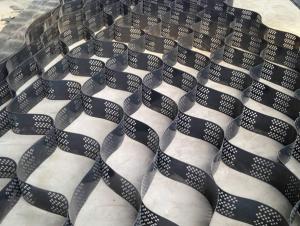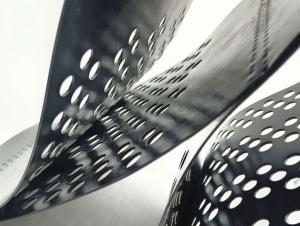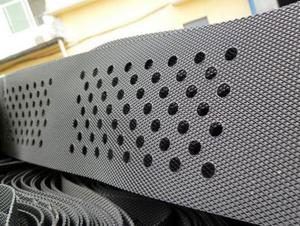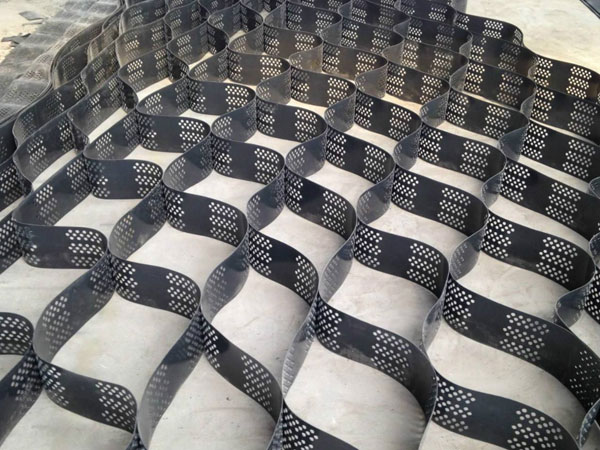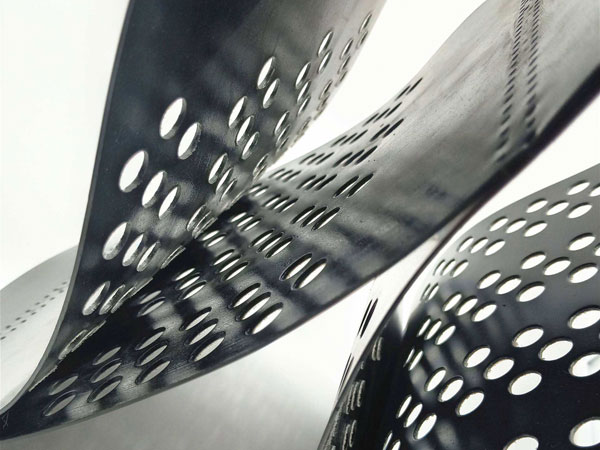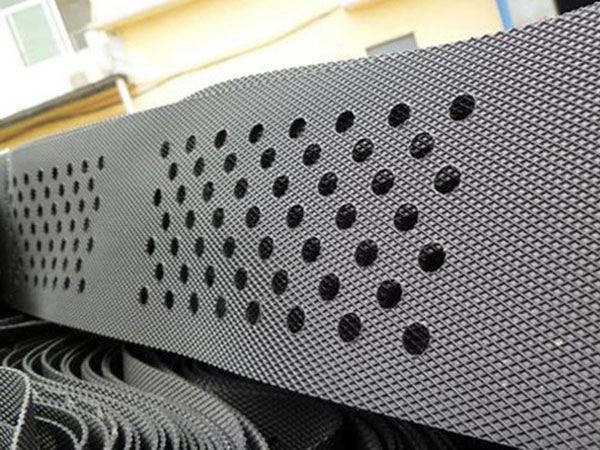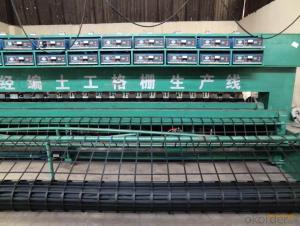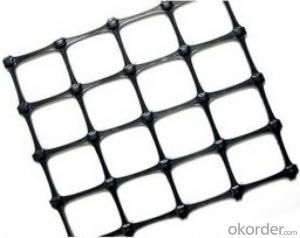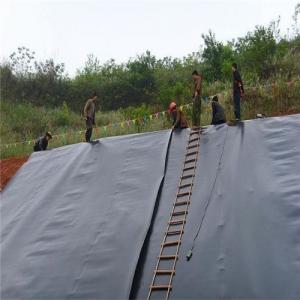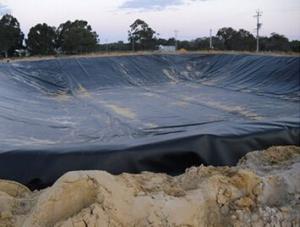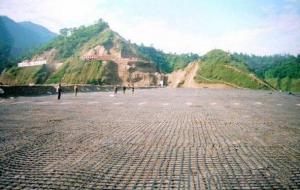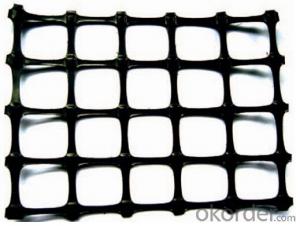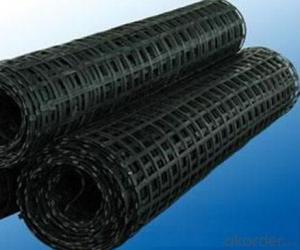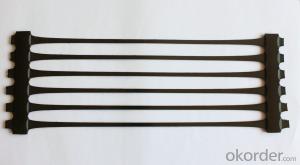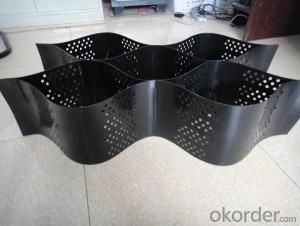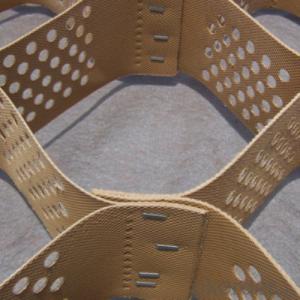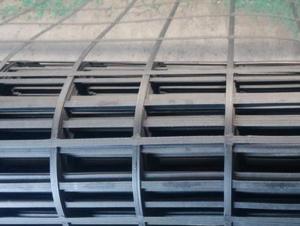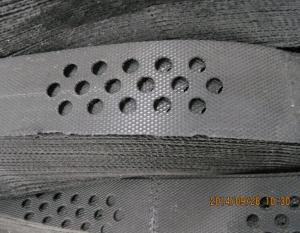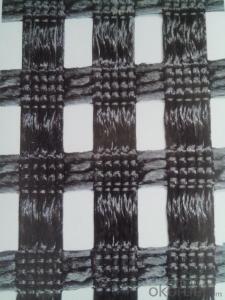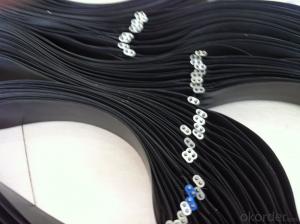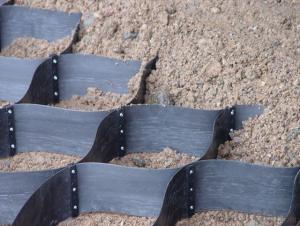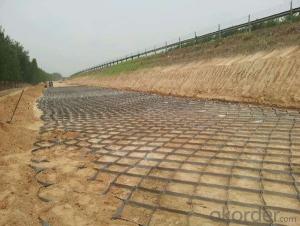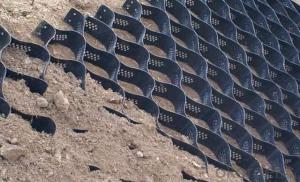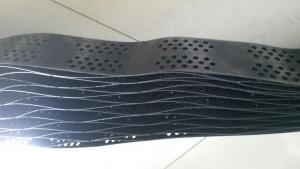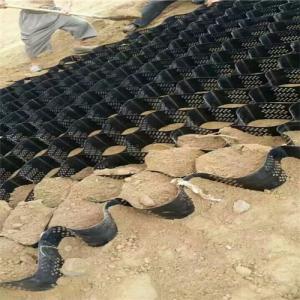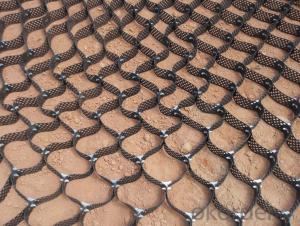Geocells Philippines - HDPE Geocell with Various Parameters from China Supplier
- Loading Port:
- Guangzhou
- Payment Terms:
- TT or LC
- Min Order Qty:
- 10 m²
- Supply Capability:
- 9999999 m²/month
OKorder Service Pledge
OKorder Financial Service
You Might Also Like
We provide Geocells with various parameters. If you have procurement needs, please contact us, and we will provide you with samples and the lowest price of the factory. Our products have passed the CE certification of EU. If you need the parameters of various types of Geocellss, you can contact us to obtain the product atlas.
What is a Geocells?
Geocells is a three-dimensional network cell structure formed by high-strength welding of reinforced HDPE sheet materials. It is generally welded by ultrasonic needle. Some holes are drilled on the diaphragm due to engineering needs.
Characteristics of Geocells
1. It is flexible, transportable and collapsible. During construction, it can be tensioned into a mesh and filled with loose materials such as soil, gravel and concrete to form a structure with strong lateral restrictions and large stiffness.
2. Light material, abrasion resistance, stable chemical performance, light and oxygen aging resistance, acid and alkali resistance, suitable for different soil conditions such as desert.
3. High lateral limit and anti-skid, anti deformation, effectively enhance the bearing capacity of the subgrade and disperse load.
4. Changing geometric dimensions such as Geocells height and welding distance can meet different engineering needs.
5. Flexible, small transport volume; Convenient connection and fast construction speed.
Characteristics of Geocells:
1. It can be expanded and contracted freely, transported and stacked. During construction, it can be tensioned into a network and filled with loose materials such as soil, gravel and concrete to form a structure with strong lateral restrictions and large stiffness.
2. It is light, wear-resistant, stable in chemical performance, resistant to light and oxygen aging, acid and alkali, and suitable for different soil conditions such as desert.
3. High lateral limit and anti-skid, anti deformation, effectively enhance the bearing capacity of the subgrade and disperse load.
4. Changing geometric dimensions such as Geocells height and welding distance can meet different engineering needs.
5. Flexible, small transportation volume, convenient connection and fast construction speed. That is to say, once the load acts on the subgrade, a wedge-shaped active area will be formed under the load, which will be squeezed through the transition area, so that the passive area will bulge.
Components of Geocells
Geocells is a mesh cell structure formed by high-strength HDPE or PP copolymer broadband through strong welding or riveting. It is flexible and can be folded during transportation. When it is used, it is opened and filled with earth rock or concrete materials, forming a structure with strong lateral restrictions and large stiffness. It can be used as cushion to treat soft foundation to increase the bearing capacity of the foundation, and can also be laid on the slope to form a slope protection structure, and can also be used to build a retaining structure.
Use of Geocells
1. It is used to stabilize highway and railway subgrade.
2. It is used to control levees and shallow river channels bearing gravity.
3. Mixed retaining wall used to prevent landslide and loaded gravity.
4. When encountering soft foundation, the use of Geocells can greatly reduce the construction labor intensity, reduce the subgrade thickness, and the construction speed is fast, the performance is good, and the project cost is greatly reduced.
Engineering Application of Geocells
1. Treat half filled and half excavated subgrade. When building an embankment on a slope with a natural gradient of more than 1:5, steps shall be excavated at the base of the embankment, and the width of the steps shall not be less than 1M. When building or rebuilding the highway by stages, steps shall be excavated at the junction of the fill slopes of the new and old subgrades. The width of the steps of high-grade highways is generally 2M. Geocellss shall be laid on the horizontal surface of each step, and the reinforcement effect of the facade side of the Geocellss shall be used, Better solve the problem of uneven settlement.
2. Subgrade in windy sand area. The subgrade in windy sand area shall mainly be low embankment, and the filling height is generally not less than 0.3M Due to the professional requirements of low subgrade and heavy bearing for subgrade construction in wind blown sand area, the use of Geocells can play a side limiting role for loose filler, and ensure that the subgrade has high stiffness and strength within a limited height to withstand the load stress of large vehicles.
3. The abutment back subgrade is filled with reinforcement. The use of Geocells can better achieve the purpose of reinforcing the abutment back. Enough friction can be generated between the Geocells and the filler, which can effectively reduce the uneven settlement between the subgrade and the structure, and ultimately effectively alleviate the early impact damage of "abutment bump" disease on the bridge deck.
4. Subgrade in permafrost regions. When constructing fill subgrade in permafrost regions, the minimum fill height shall be reached to prevent the occurrence of frost boiling or the reduction of the upper limit of the frozen layer, which may cause excessive settlement of the embankment. The unique facade reinforcement effect of the Geocells and the effective implementation of the overall lateral limit can ensure the minimum fill height in some special sections to the greatest extent, and make the fill have high quality strength and stiffness.
5. Treatment of loess collapsible subgrade. When expressways and Class I highways pass through collapsible loess and loess sections with good compressibility, or when the allowable bearing capacity of the high embankment foundation is lower than the pressure of the vehicle load and the dead weight of the embankment, the subgrade should also be treated according to the requirements of the bearing capacity. At this time, the superiority of the geotextile cell will undoubtedly appear.
6. Saline soil and expansive soil. The expressway, Class I highway, shoulder and side slope constructed with saline soil and expansive soil are all reinforced. The facade reinforcement effect of the cell is the most excellent one among all reinforcement materials, and it has excellent corrosion resistance, which can fully meet the requirements of building highways in saline soil and expansive soil.
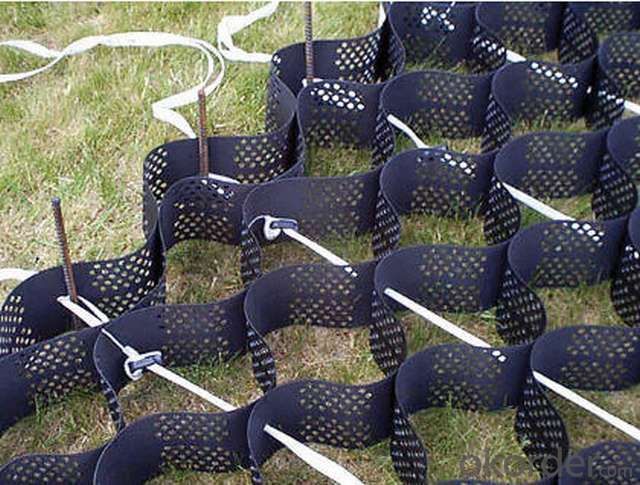
FAQ:
Q1:Can you provide a sample for us?
A:yes,we can provide for your free samples based on freight collect.
Q2:What is your MOQ?
A:MOQ is 10000sqm.
Q3:What is payment terms?
A:T/T,L/C
Q4:What is your lead time?
A:According to your order quantity,usually 7days for 1*40HC
Q5:Do the customized design accepted?
A:We welcome customized design.
- Q: Can geocells be used in flood protection systems?
- Yes, geocells can be used in flood protection systems. Geocells are three-dimensional cellular structures made from high-density polyethylene (HDPE) or other materials that can be filled with soil, aggregate, or concrete. These cells can be interconnected to form a strong and stable barrier that can help in flood control and protection. By providing confinement and reinforcement, geocells can prevent soil erosion and maintain the stability of embankments, levees, and riverbanks during flooding events. Additionally, geocells can be used for channel lining and slope stabilization, further enhancing flood protection systems.
- Q: Geotextile permeability tester is used to detect which indicators?
- Geotextile permeability tester for the determination of geotextiles and plastic drainage board along the direction of its water flow performance. Meet the standard: Standard Group (Hong Kong) Limited STMD4716 "geotextile and its related products in the constant water under the water (along the fabric plane flow) test"; ISO / FDISl2958-98E "Determination of geotextile and its related products along the fabric plane water transport capacity". Features: 1. Penetration pressure chamber: including aluminum alloy pressure chamber, plexiglass container, upper and lower latex gasket; 2. Normal force loading device: including precision stainless steel pressure gauge, pressure regulator, pressure source, all kinds of switches, piping, loading frame; 3. Water quality filtration system; 4. Penetration of the head pressure tube, water supply tank, water switch, water metering containers or measuring tube. Technical Parameters: 1. Sample size: 100mm wide, 200mm thick 2. Sample length: 40mm 3. The effect of the above stress with the sample: 0 ~ 500kPa 4. Constant head adjustment range: 0 ~ 600mm 5. Press standard: 2kPa, 20kPa, 200kPa
- Q: Are geocells suitable for oil and gas industry applications?
- Yes, geocells are suitable for oil and gas industry applications. Geocells are geosynthetic products that can effectively reinforce soil, provide stability, and prevent erosion. These characteristics make them ideal for applications in the oil and gas industry, such as stabilizing access roads, constructing temporary work platforms, and reinforcing pipeline and well pads. Geocells can withstand heavy loads and harsh environments, making them a reliable choice for oil and gas operations.
- Q: Do geocells improve soil stabilization?
- Yes, geocells do improve soil stabilization. Geocells are three-dimensional cellular structures made from high-density polyethylene or other durable materials. When installed in soil, they create a network of interconnected cells that confine and reinforce the soil. This confinement enhances the load-bearing capacity of the soil, preventing erosion and improving stability. Geocells are commonly used in various applications like road construction, slope protection, and landfills to enhance soil stability and prevent soil erosion.
- Q: What are the factors affecting the performance of geocells?
- There are several factors that can affect the performance of geocells, including the type and quality of the geocell material, the design and layout of the cells, the soil conditions and properties, the load and traffic intensity, and the installation and maintenance practices.
- Q: Can geocells be used for oil spill prevention?
- Yes, geocells can be used for oil spill prevention. Geocells are cellular confinement systems made of connected individual cells filled with different materials, such as soil or aggregate. These cells can be used to create barriers or containment systems to prevent the spread of oil spills, as they provide a stable and impermeable structure. By deploying geocells strategically, they can help contain and control oil spills, protecting the environment and minimizing the damage caused by such incidents.
- Q: What are the different types of geocells?
- There are several types of geocells, including honeycomb geocells, strip geocells, and cellular confinement systems.
- Q: Can geocells be used in underground parking structures?
- Yes, geocells can be used in underground parking structures. Geocells are commonly used in various construction applications, including underground parking structures, to provide soil stabilization, enhance load-bearing capacity, and prevent soil erosion. They are lightweight, easy to install, and can effectively distribute the load from vehicles, making them suitable for such structures.
- Q: Can geocells be used for load support?
- Yes, geocells can be used for load support. Geocells are three-dimensional cellular confinement systems made from high-density polyethylene (HDPE) material. They are used to provide stability and reinforcement to soils, making them suitable for load-bearing applications. By confining and compacting soil within the geocells, they can distribute loads evenly and provide increased load-bearing capacity for various infrastructure projects such as road construction, slope stabilization, and retaining walls.
- Q: How do geocells enhance the performance of unpaved roads?
- Geocells enhance the performance of unpaved roads by providing a stable and durable foundation. These three-dimensional honeycomb-like structures are filled with aggregate materials, which distribute the load evenly and prevent the displacement of soil particles. This reinforcement system increases the road's load-bearing capacity, reduces rutting and erosion, and improves overall stability and longevity.
Send your message to us
Geocells Philippines - HDPE Geocell with Various Parameters from China Supplier
- Loading Port:
- Guangzhou
- Payment Terms:
- TT or LC
- Min Order Qty:
- 10 m²
- Supply Capability:
- 9999999 m²/month
OKorder Service Pledge
OKorder Financial Service
Similar products
Hot products
Hot Searches
Related keywords
